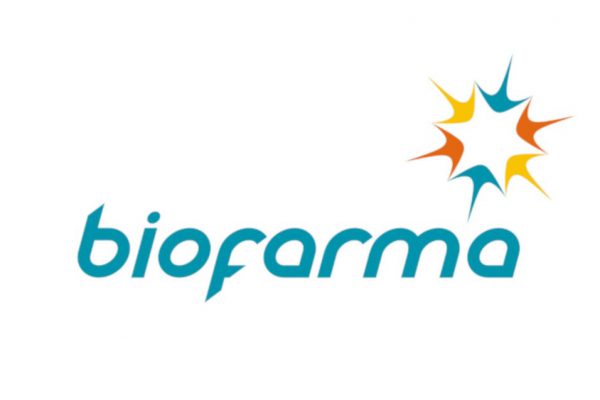by techsupport
Share

ConnectedLife and Roche collaborate to further empower patients with chronic heart conditions to self-monitor via trusted and secure data sharing
To support Roche Diagnostics Asia Pacific’s commitment in empowering patients on blood-thinning therapy to consistently monitor the effectiveness of their treatments and prevent unnecessary side-effects, ConnectedLife has developed an innovative solution that combines a mobile app, a management dashboard, and cloud services for Roche Coaguchek® INRange system.
As a pilot, the app allows a selected group of users to transmit information from their Coaguchek device to a cloud server, which Roche obtains a subscription of, in Singapore. A management dashboard is used by clinical staff to onboard users seamlessly and readings taken from their device is sent back to the hospital’s system used to maintain patients’ records. This information tells doctors whether patients on blood thinning therapy are within therapeutic range (i.e. the right dosage), enabling them to adjust their dosage in a timely manner if necessary.

Why CoaguChek
Patients with heart-valve replacement or chronic heart conditions such as atrial fibrillation often undergo anti-coagulation therapy (as known as blood-thinning therapy like warfarin) to prevent blood clots. For these patients, regular testing of the International Normalised Ratio (INR) levels is necessary to ensure the right treatment dosage. Poor control may lead to life-threatening complications such as bleeding or stroke.
Roche’s CoaguChek INRange self-monitoring system empowers patients to conveniently test and monitor their INR levels in less than five minutes without any disruption to their normal daily activities. It has been proven that frequent self-testing offers both clinical and patient benefits as patients, who adhere to frequent monitoring and spend more time in their therapeutic range, can have better drug compliance, which results in lower incidence of stroke¹ or bleeding.² Studies showed that 92% of patients, who monitor their INR levels every three days, successfully remain in their therapeutic range compared to 50–60% of patients when INR levels are monitored only once a month.³ Patients who spend a high proportion of time (> 70%) in the therapeutic range achieve significantly better clinical outcomes.⁴’⁵
In addition, the CoaguChek INRange system helps to enhance the relationship between patients and their healthcare professionals. Patients build a deeper understanding of their INR results through frequent self-testing and physicians are more confident that they can optimise treatment decisions effectively as they can have more frequent access to patient data. Evidence has shown that patients who have a strong link with their healthcare professionals adhere better to their anticoagulation treatment plan.3
Why ConnectedLife
Today, patients using the CoaguChek system may be sending their results to their physicians through WhatsApp, SMS, phone calls or emails. This can increase the risk of human errors and it is an inconvenient and insecure process. With the ConnectedLife solution, patients just need to download the ConnectedLife INR app onto their mobile phones and pair their phones with their Coaguchek devices. Via wireless connectivity, patients’ INR results will automatically be sent to their healthcare institution. This ensures clinical staff receives patient INR results accurately and securely. Trend report functionality provides healthcare professionals an overview on the stability of patients’ INR levels, enabling optimal therapy management.
In addition to INR readings, the ConnectedLife INR app enables patients to self-label and provide further information about their treatment regime and symptoms to the healthcare professionals for analysis. Patients can also access their historical readings.
Pilot Program roll-out
The pilot program was with the National Heart Centre Singapore.
For more information about CoaguChek, visit here.
References
- Heneghan C, Ward A, Perera R, et al. Self-monitoring of oral anticoagulation: systematic review and meta-analysis of individual patient data. Lancet. 2012;379:322-334.
- Heneghan, C., Alonso-Coello, P., Garcia-Alamino, J.M., Perera, R., Meats, E., Glasziou, P. (2006). Self-monitoring of oral anticoagulation: a systematic review and meta-analysis. Lancet 367, 404–411.
- Khan TI, Kamali F, Kesteven P, Avery P, Wynne H. The value of education and self-monitoring in the management of warfarin therapy in older patients with unstable control of anticoagulation. Br J Haematol. 2004;126(4):557-654.
- Gallagher, A.M., Setakis, E., Plumb, J.M., Clemens, A., van Staa, T.-P. (2011). Risks of stroke and mortality associated with suboptimal anticoagulation in atrial fibrillation patients. Thromb Haemost 106, 968–977.
- Wan, Y., Heneghan, C., Perera, R., Roberts, N., Hollowell, J., Glasziou, P. et al. (2008). Anticoagulation control and prediction of adverse events in patients withatrial fibrillation: a systematic review. Circ Cardiovasc Qual Outcomes 1, 84–91.
- Ward A, Tompson A, Fitzmaurice D, Sutton S, Perera R, Heneghan C. Cohort study of Anticoagulation Self-Monitoring (CASM):a prospective study of its effectiveness in the community. Br J Gen Pract. 2015;65(636):e428-437.
STAY IN THE LOOP



